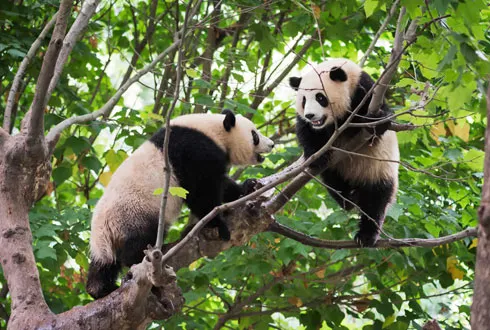The Award-Winning Tour Specialist
The giant panda has become the rallying symbol for global conservation and a national treasure of its native China. A creature that spends 12 hours of its day munching on bamboo, videos of panda's playful and often clumsy antics has made them adored around the world.
Read on to find out all about these adorable bears and the best places to see pandas in China.
Inclusive of Tour & International Flights
Inclusive of Tour & International Flights







